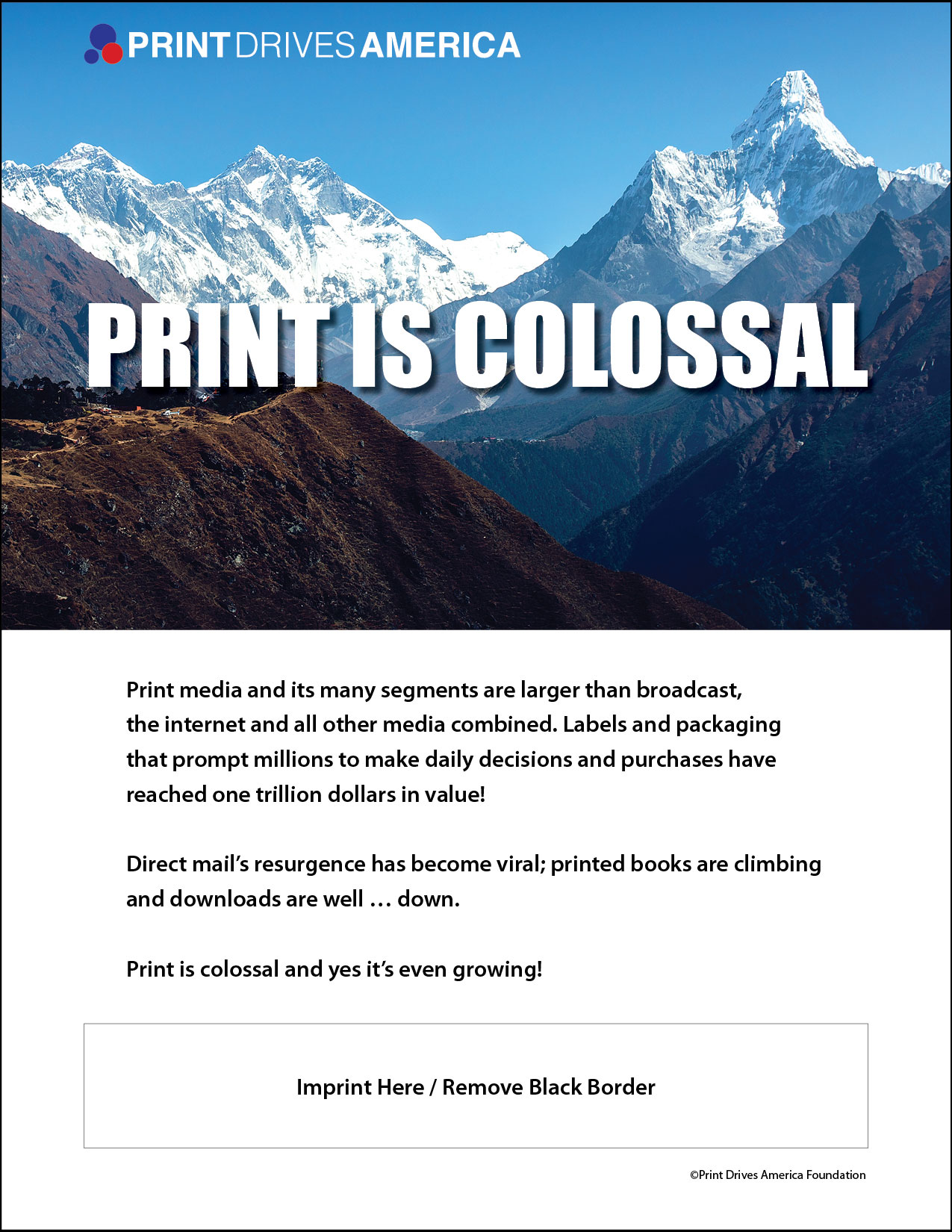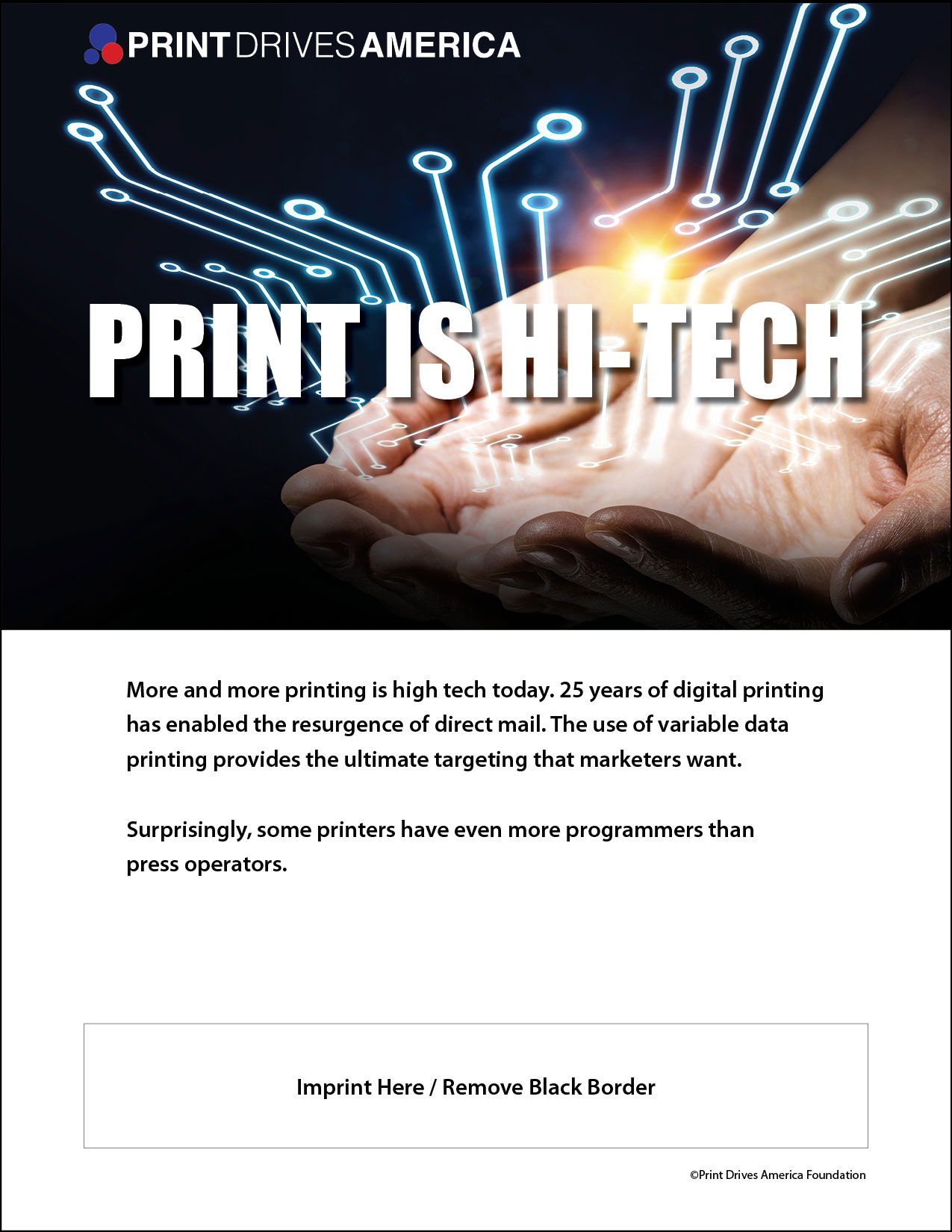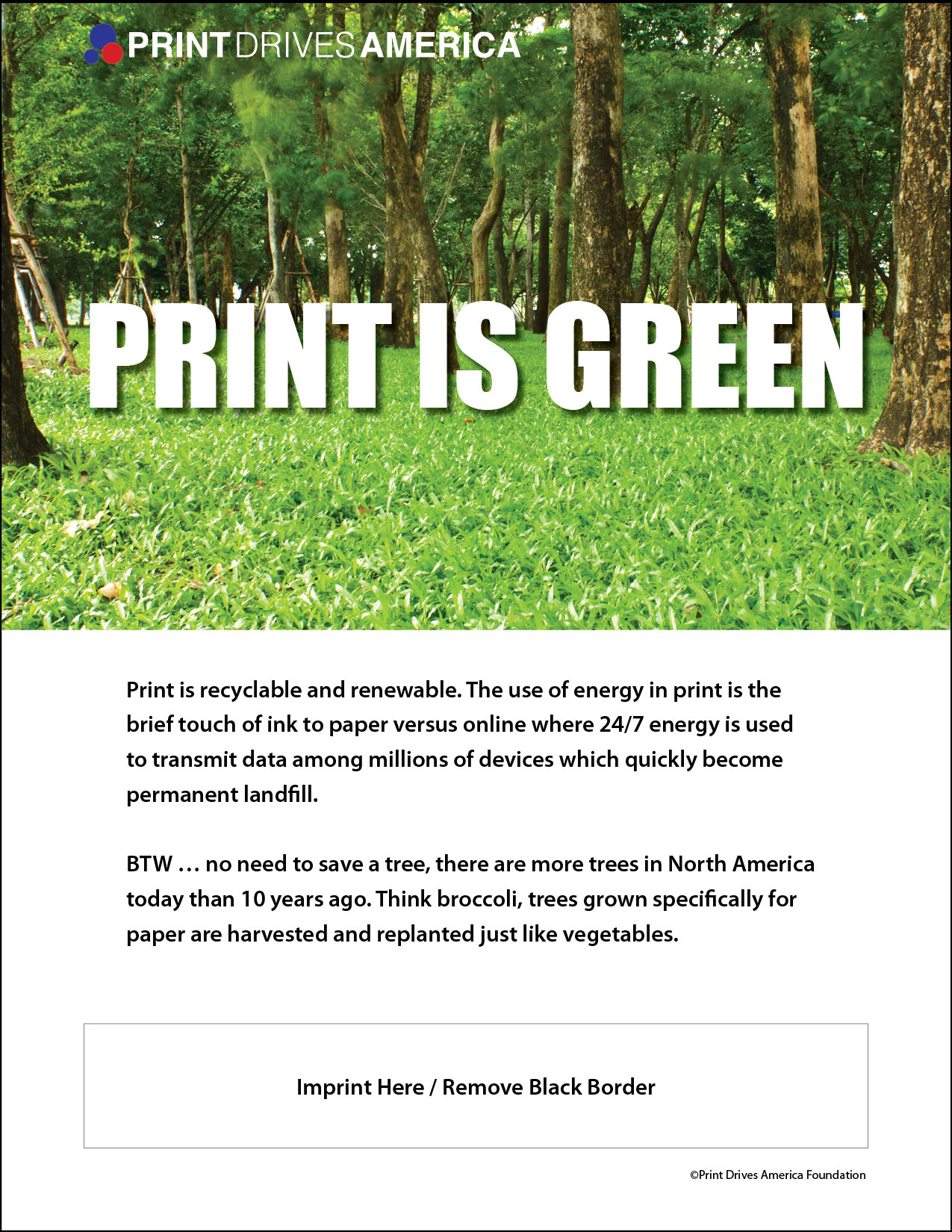Both digital and offset printing have made strides to conserve energy and reduce their environmental footprints. But, even with all of the advancements in the print industry, its environmental friendliness continues to come under fire. Digital printing in particular continues to evolve and increase its environmental efficiency.
Digital printing eliminates the need for certain chemicals in the printing process. Digital printing does not need chemicals such as film, powders and cleaning solvents. Because of the reduction in the chemicals used to print, it also makes for less waste once the materials are disposed of after they’re used.
Additionally, the ink used in digital printing has almost no liquid toner and contains a very small amount of ink solvents. Due to this reduction, digital presses emit little to no V.O.C.s. According to an article from Paperspecs.com, digital presses are so clean, that they can be ran in typical office environments – this reduces digital printing’s overall energy consumption.
As we mentioned earlier in the week, over two thirds of the energy used in the production of print and paper is recycled energy. It is the advances in digital presses that has allowed the industry to use more recycled material in the printing process as well. For example, in the past certain type of recycled paper wouldn’t run smoothly through the presses, today, almost all recycled and FSC certified papers can run in a digital press.
Digital printing is just one way the print and paper industry is taking strides toward its environmental friendliness. As technology advances, the industry’s ability to be green continues to flourish as well.
Timothy Freeman
President
Print & Graphic Communications Association




